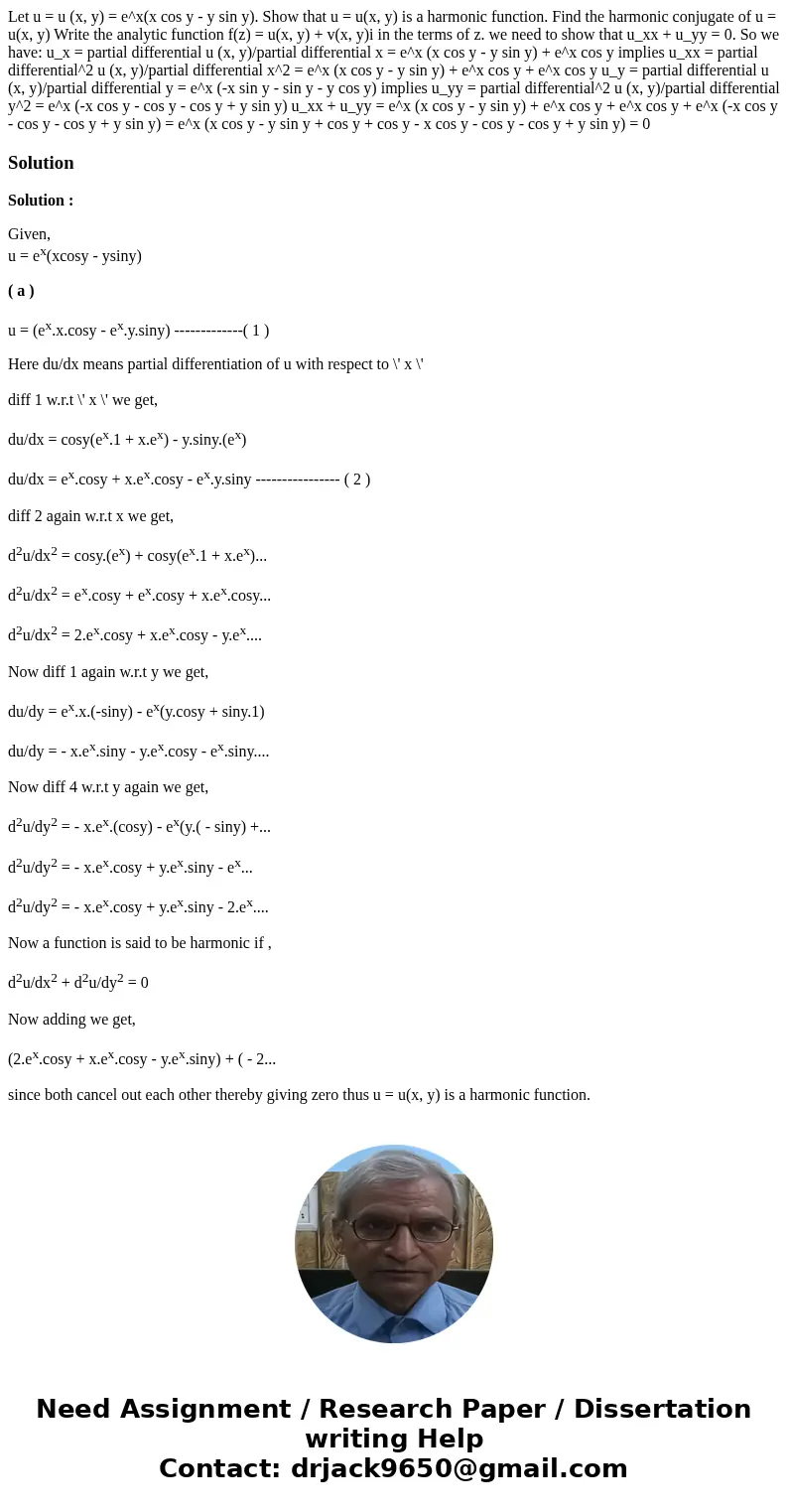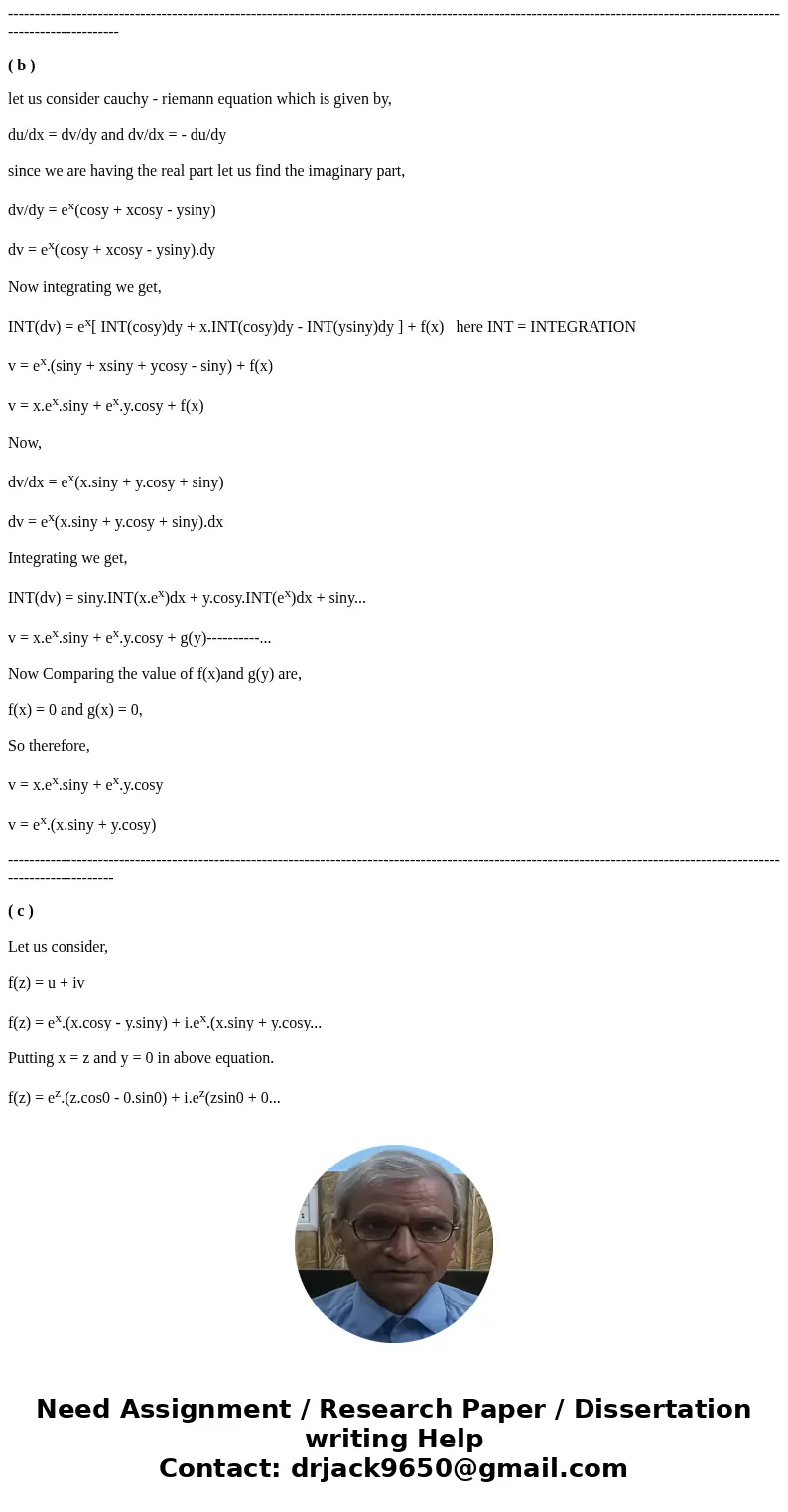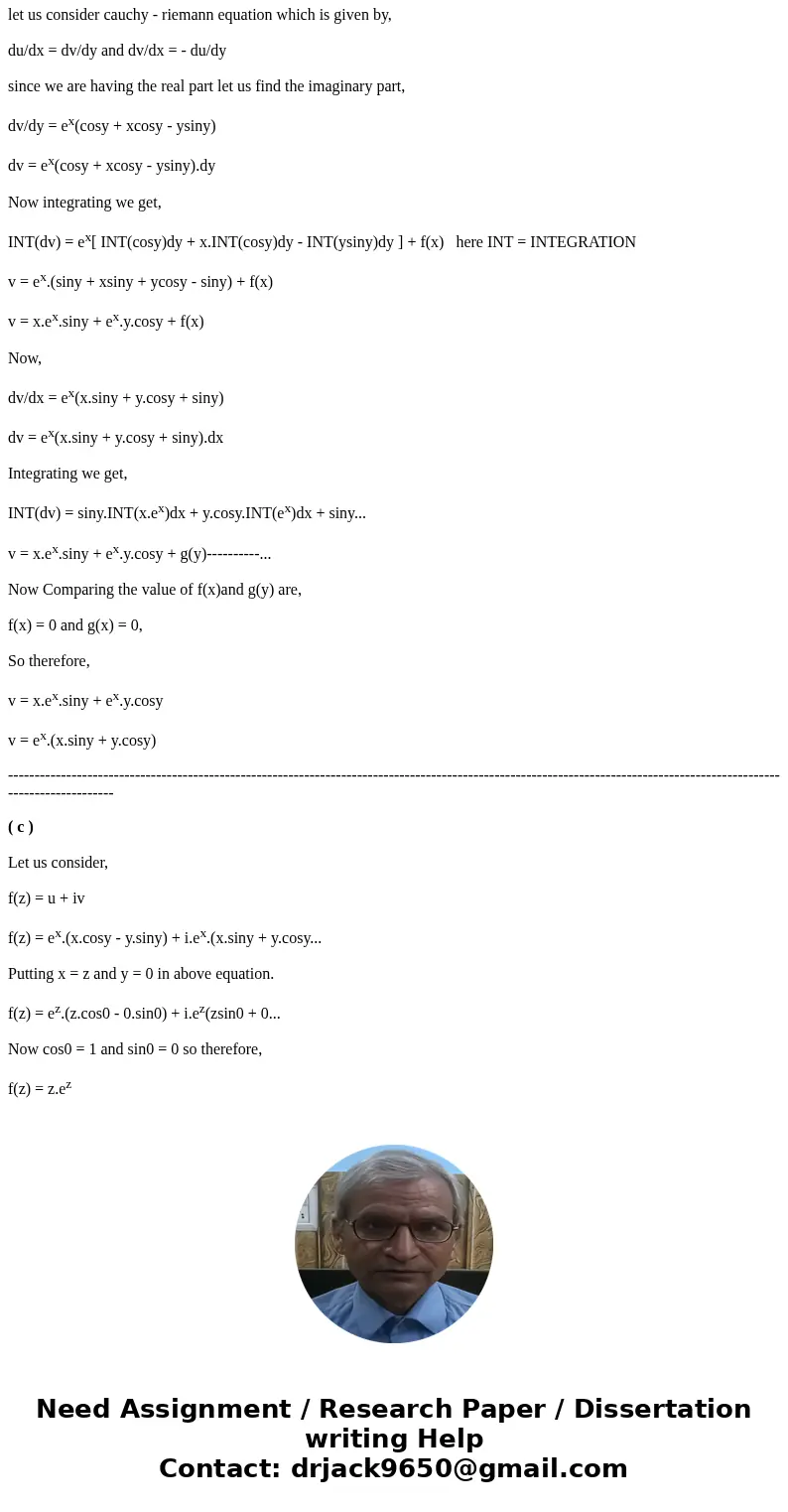Let u u x y exx cos y y sin y Show that u ux y is a harm
Solution
Solution :
Given,
u = ex(xcosy - ysiny)
( a )
u = (ex.x.cosy - ex.y.siny) -------------( 1 )
Here du/dx means partial differentiation of u with respect to \' x \'
diff 1 w.r.t \' x \' we get,
du/dx = cosy(ex.1 + x.ex) - y.siny.(ex)
du/dx = ex.cosy + x.ex.cosy - ex.y.siny ---------------- ( 2 )
diff 2 again w.r.t x we get,
d2u/dx2 = cosy.(ex) + cosy(ex.1 + x.ex)...
d2u/dx2 = ex.cosy + ex.cosy + x.ex.cosy...
d2u/dx2 = 2.ex.cosy + x.ex.cosy - y.ex....
Now diff 1 again w.r.t y we get,
du/dy = ex.x.(-siny) - ex(y.cosy + siny.1)
du/dy = - x.ex.siny - y.ex.cosy - ex.siny....
Now diff 4 w.r.t y again we get,
d2u/dy2 = - x.ex.(cosy) - ex(y.( - siny) +...
d2u/dy2 = - x.ex.cosy + y.ex.siny - ex...
d2u/dy2 = - x.ex.cosy + y.ex.siny - 2.ex....
Now a function is said to be harmonic if ,
d2u/dx2 + d2u/dy2 = 0
Now adding we get,
(2.ex.cosy + x.ex.cosy - y.ex.siny) + ( - 2...
since both cancel out each other thereby giving zero thus u = u(x, y) is a harmonic function.
-----------------------------------------------------------------------------------------------------------------------------------------------------------------------
( b )
let us consider cauchy - riemann equation which is given by,
du/dx = dv/dy and dv/dx = - du/dy
since we are having the real part let us find the imaginary part,
dv/dy = ex(cosy + xcosy - ysiny)
dv = ex(cosy + xcosy - ysiny).dy
Now integrating we get,
INT(dv) = ex[ INT(cosy)dy + x.INT(cosy)dy - INT(ysiny)dy ] + f(x) here INT = INTEGRATION
v = ex.(siny + xsiny + ycosy - siny) + f(x)
v = x.ex.siny + ex.y.cosy + f(x)
Now,
dv/dx = ex(x.siny + y.cosy + siny)
dv = ex(x.siny + y.cosy + siny).dx
Integrating we get,
INT(dv) = siny.INT(x.ex)dx + y.cosy.INT(ex)dx + siny...
v = x.ex.siny + ex.y.cosy + g(y)----------...
Now Comparing the value of f(x)and g(y) are,
f(x) = 0 and g(x) = 0,
So therefore,
v = x.ex.siny + ex.y.cosy
v = ex.(x.siny + y.cosy)
----------------------------------------------------------------------------------------------------------------------------------------------------------------------
( c )
Let us consider,
f(z) = u + iv
f(z) = ex.(x.cosy - y.siny) + i.ex.(x.siny + y.cosy...
Putting x = z and y = 0 in above equation.
f(z) = ez.(z.cos0 - 0.sin0) + i.ez(zsin0 + 0...
Now cos0 = 1 and sin0 = 0 so therefore,
f(z) = z.ez



 Homework Sourse
Homework Sourse